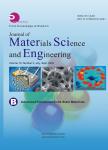Electrochemical Behavior of Stainless Steel under High-Temperature and High-Pressure Methanol Solution Containing Oxygen and Chloride Ions
Electrochemical Behavior of Stainless Steel under High-Temperature and High-Pressure Methanol Solution Containing Oxygen and Chloride Ions作者机构:Kimura Chemical Plant Co. Ltd 2-1-2 Terashima Kuise Amagasaki Hyogo 660-8567 Japan School of Engineering Department of Materials Science and Engineering University of Hyodo 2167 Shosha Himeji Hyogo 671-2280 Japan
出 版 物:《材料科学与工程(中英文B版)》 (Journal of Materials Science and Engineering B)
年 卷 期:2011年第1卷第7期
页 面:861-870页
学科分类:08[工学] 09[农学] 080502[工学-材料学] 0805[工学-材料科学与工程(可授工学、理学学位)] 0901[农学-作物学]
主 题:316L不锈钢 甲醇溶液 电化学行为 氧气 离子对 阳极极化曲线 水分含量 高压
摘 要:The effect of oxygen and water in a methanol solution containing 0.42 wt% LiCl on the corrosion behavior of Type 316L stainless steel was evaluated by anodic polarization and electrochemical impedance spectroscopy (EIS) at 423 K and 473 K. The Ecorr values in an aerated methanol solution decreased with immersion time and became almost the same as that observed in a deaerated methanol solution after 5 h. The dissolved oxygen molecules temporarily improved the corrosion resistance, judging from the increase in Ea (anodic dissolution potential). This effect of oxygen molecules was not observed with the immersion time, consequently the anodic polarization curve became almost similar to that obtained in the absence of them. While the localized tarnish was observed in the aerated methanol solution with lower water contents, many pits formed when the water content increased. At 423 K, a corrosive effect of oxygen in the methanol solution was exhibited in the presence of water and pitting corrosion and autocatalytic reaction were observed. On the other hand, no corrosion occurred at 473 K, regardless of the oxygen and water concentrations.



